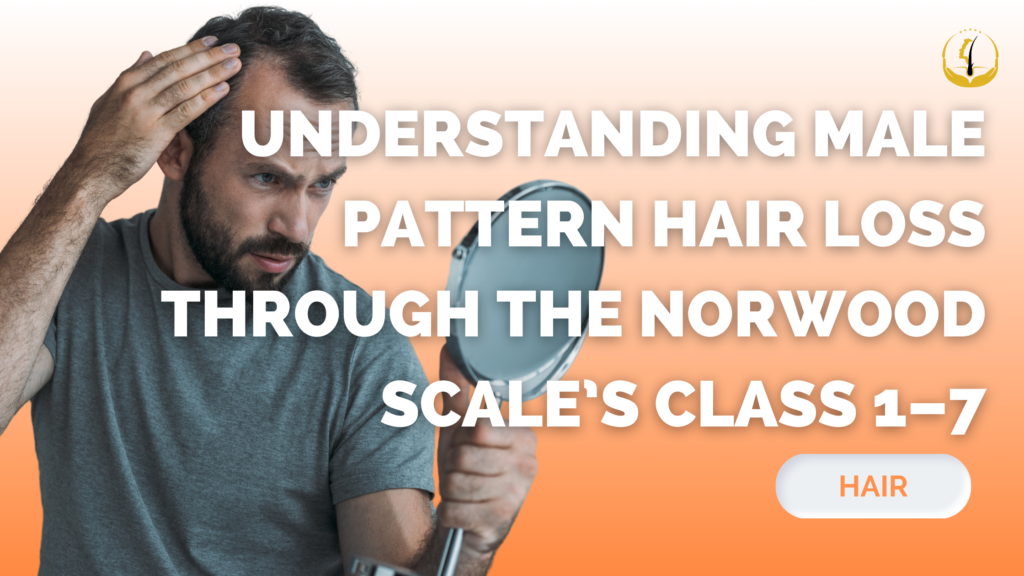5 Skin Concerns that Respond to Platelet-Rich Plasma

In the ever-evolving world of skincare, it’s not uncommon to come across various treatments promising youthful, radiant skin. Among these innovative approaches, Platelet-Rich Plasma (PRP) has garnered significant attention for its natural rejuvenation properties. PRP, also known as the “vampire facial,” utilizes the body’s own healing mechanisms to target a range of skin concerns, yielding impressive results. Without further ado, let’s explore the five common skin concerns that have shown promising responses to PRP treatments. Fine Lines and Wrinkles Fine lines and wrinkles are the inevitable signs of aging that many of us wish to combat. PRP offers a natural and non-invasive solution to minimize these pesky lines. The treatment involves drawing a small sample of the patient’s blood and then spinning it in a centrifuge to separate the platelet-rich plasma from other components. The resulting PRP is then skillfully injected into the target areas, stimulating collagen production and rejuvenating the skin from within. Over time, patients witness the gradual fading of fine lines and the smoothing of wrinkles, resulting in a more youthful and vibrant appearance. Acne Scars Acne scars can leave lasting marks on both the skin and self-confidence. While there are various treatments available, PRP has emerged as a promising option. The growth factors present in PRP promote tissue repair and regeneration, effectively reducing the appearance of acne scars. By encouraging collagen synthesis and new cell growth, PRP works to fade the scars, leaving the skin with a smoother texture and a renewed sense of confidence. For those seeking a non-surgical approach to acne scar treatment, PRP offers a compelling solution. Hyperpigmentation Hyperpigmentation, characterized by dark spots and uneven skin tone, can be a result of sun exposure, hormonal imbalances, or post-inflammatory responses. Traditional treatments like chemical peels and laser therapies have shown some efficacy, but they often come with side effects and downtime. PRP, on the other hand, offers a gentler and natural alternative. By stimulating the skin’s healing process and promoting cell turnover, PRP gradually diminishes hyperpigmentation, revealing a more even and radiant complexion. Sagging Skin As we age, our skin’s elasticity diminishes, leading to sagging and drooping in various areas, such as the cheeks, jawline, and neck. While surgical facelifts have been the go-to option for many, not everyone is willing to undergo invasive procedures. PRP comes to the rescue as a non-surgical facelift alternative. By harnessing the power of growth factors and collagen production, PRP stimulates tissue regeneration and tightens the skin, resulting in a subtle lift and rejuvenated facial contours. Under-Eye Circles and Puffiness The delicate skin under our eyes is prone to dark circles and puffiness, making us look tired and aged even on our best days. PRP treatments offer a unique approach to combat these under-eye concerns. When injected into the under-eye area, PRP works to increase blood flow, reduce inflammation, and promote collagen production. As a result, the skin becomes plumper, puffiness is reduced, and the appearance of dark circles is diminished. Patients notice a fresher and more youthful look that brightens their overall appearance. In the world of skincare, Platelet-Rich Plasma (PRP) has emerged as a game-changer, offering natural and effective solutions to various skin concerns. From fighting fine lines and wrinkles to combatting acne scars and hyperpigmentation, PRP’s rejuvenating properties have made it a sought-after treatment among those seeking non-invasive alternatives to traditional procedures. Additionally, its ability to address sagging skin and under-eye circles with minimal downtime has solidified its place as a reliable choice in the realm of aesthetic treatments. Before considering PRP or any other skincare treatment, it’s essential to consult with a qualified dermatologist or medical professional to determine the best course of action for your specific skin concerns. Remember, each individual’s skin is unique, and a personalized approach is crucial to achieving the desired results. With PRP leading the way in innovative skincare, the future of natural skin rejuvenation looks brighter than ever. Embrace the power of your body’s own healing mechanisms and unlock the secrets to radiant, youthful skin with PRP! At Glojas, we welcome clients to reach out to us directly to schedule a free initial consultation. We offer guidance and valuable insights on how best to address your specific challenges. Let us assist you in navigating your journey with confidence and clarity.
Does Nipple Reduction Surgery Have an Impact on Breastfeeding?
The desire for aesthetic perfection is not uncommon, and with advances in medical science, cosmetic procedures like nipple reduction surgery have become increasingly popular. For individuals seeking this surgery, concerns about its potential impact on future breastfeeding capabilities often arise. Let’s explore more into the facts and myths surrounding nipple reduction surgery and its relationship with breastfeeding. Nipple reduction surgery is a cosmetic procedure designed to alter the size, shape, or projection of the nipple. Many people opt for this surgery due to personal insecurities or dissatisfaction with the appearance of their nipples. The procedure involves removing a portion of the nipple tissue, resulting in a smaller, more aesthetically pleasing nipple. The Mechanics of Breastfeeding Before delving into the potential impact of nipple reduction surgery on breastfeeding, it’s crucial to understand the mechanics of breastfeeding. Breastfeeding is a complex process that involves the infant latching onto the nipple and areola to extract milk from the mammary glands. The nipple’s function is not only to provide milk but also to act as a guide for the baby during the latch-on process. Potential Concerns and Misconceptions One of the common misconceptions surrounding nipple reduction surgery is that it will hinder the ability to breastfeed. While the surgery does involve removing some nipple tissue, it is essential to note that the mammary glands responsible for milk production are located deeper within the breast. As a result, nipple reduction surgery typically does not affect a woman’s ability to produce milk. Nipple Sensation and Breastfeeding Another concern often voiced by those considering nipple reduction surgery is the potential loss of nipple sensation, which could impact the breastfeeding experience. While it’s true that nipple sensation might be temporarily affected post-surgery, it usually returns as the healing process progresses. In most cases, this restored sensation does not hinder the breastfeeding process. Individual Variations and Consultation It is vital to remember that each person’s body responds differently to surgery, and the impact on breastfeeding can vary from one individual to another. Consulting with a board-certified plastic surgeon experienced in performing nipple reduction procedures is crucial to understanding the potential outcomes and addressing any concerns. Timing of Nipple Reduction Surgery For individuals who plan to have children and breastfeed in the future, timing is a crucial consideration. Some surgeons recommend postponing nipple reduction surgery until after completing one’s family and breastfeeding journey. This approach ensures that any potential changes in nipple sensitivity or breastfeeding capabilities are not a concern. Alternative Options and Considerations For individuals who are unsure about nipple reduction surgery’s impact on breastfeeding but still wish to alter the appearance of their nipples, there are alternative options to consider. Temporary cosmetic solutions, such as nipple concealers or makeup, can provide the desired aesthetic changes without any impact on breastfeeding. Psychological Benefits of Nipple Reduction Surgery While concerns about breastfeeding are valid, it is essential to acknowledge the psychological benefits that nipple reduction surgery can offer. For individuals struggling with self-esteem issues or discomfort due to the appearance of their nipples, this surgery can provide a significant boost in confidence and overall well-being. In conclusion, nipple reduction surgery does not necessarily have a negative impact on breastfeeding for most individuals. The surgery primarily affects the nipple’s appearance and sensitivity, while the mammary glands responsible for milk production remain largely unaffected. As with any medical decision, it is crucial to consult with a qualified surgeon and make an informed choice based on individual circumstances and desires. Remember, the psychological benefits of increased self-confidence can greatly enhance one’s quality of life. Ultimately, a well-informed decision is the key to achieving both aesthetic satisfaction and potential breastfeeding goals. At Glojas, we welcome clients to reach out to us directly to schedule a free initial consultation. We offer guidance and valuable insights on how best to address your specific challenges. Let us assist you in navigating your journey with confidence and clarity.
Understanding Male Pattern Hair Loss through the Norwood Scale’s Class 1–7

Embarking on life’s journey inevitably entails change, and one such transformation that many men encounter is male pattern hair loss. This widespread condition affects millions globally, and witnessing the gradual thinning and receding of once-lush hair can be disheartening. However, gaining insights into the progression of male pattern hair loss through the Norwood Scale provides a valuable tool for understanding and making informed decisions about managing this natural process. Let’s delve into the details of the Norwood Scale’s Class 1–7 to comprehend this transformation. Class 1: The Quintessential Hairline In Class 1 on the Norwood Scale, individuals exhibit the quintessential hairline, enjoying a full head of hair without signs of loss. While fortunate, it’s crucial to remain aware that hair loss can initiate at any time, emphasizing the need for vigilance in monitoring potential changes. Class 2: The Slight Recession Advancing to Class 2, a mild receding hairline emerges in a subtle ‘M’ shape. This might go unnoticed, but heightened awareness of any further changes is advisable at this stage. Class 3: The First Notable Changes Class 3 marks the stage where hair loss becomes more apparent. A deeper ‘M’ shape develops, and thinning becomes noticeable at the temples. Many individuals begin to recognize their hair loss at this point, prompting consideration of professional advice from a hair specialist. Class 4: Advancing Recession In Class 4, the hair loss pattern advances with a more pronounced recession. Significant thinning at the temples and the emergence of a bald spot or “vertex” at the crown become evident. The impact on overall appearance is more noticeable, leading some men to explore hair restoration options. Class 5: The Widening Baldness Class 5 presents a widening bald area on the crown, accompanied by further recession of the hairline. Although hair loss is more apparent, there’s still enough hair in the donor area for surgical hair restoration to be a viable option for many individuals. Class 6: Thinning Bridge Reaching Class 6, the hair loss bridge between the receding hairline and the crown becomes thinner. While the donor area’s hair supply may be limited for some, surgical hair restoration remains a potential solution, contingent on individual hair characteristics. Class 7: The Advanced Stage At Class 7, male pattern hair loss reaches its most advanced stage. A band of hair along the sides and back of the head is all that remains, as the bald areas on the crown and hairline merge. Hair restoration options may be limited due to donor hair scarcity, making non-surgical solutions like hairpieces or embracing the bald look more popular choices. Embracing the Journey Understanding male pattern hair loss through the Norwood Scale’s Class 1–7 can alleviate concerns and empower individuals to embrace this natural change with confidence. Remember that hair loss is common and often part of the natural aging process. Seeking advice from a qualified hair specialist can provide valuable insights and potential solutions tailored to individual needs. Embrace your unique hair loss journey Whether at the early stages of Class 1 or facing the more advanced Class 7, there’s no one-size-fits-all approach to managing male pattern hair loss. Embrace your unique hair loss journey, explore tailored options, and remember true confidence transcends hair, rooted in self-acceptance and embracing life’s changes.
Do I Need a Second Hair Transplant?

Your hair is your crowning glory, and losing it can take a toll on your confidence and self-esteem. If you’ve already undergone a hair transplant but are still unsatisfied with the results, you might be wondering whether a second hair transplant is the right decision for you. So let’s explore deeper into the intricacies of second hair transplants, helping you make an informed choice that can bring back the fullness and luster to your mane. The First Hair Transplant Experience When you embarked on your first hair transplant journey, you likely had high hopes of achieving a full head of hair once again. While the initial procedure may have provided some improvements, it might not have met your expectations entirely. The success of a hair transplant heavily depends on various factors, such as the skill of the surgeon, the donor area’s health, and your unique hair characteristics. Assessing Your Current Situation Before diving into a second hair transplant, it’s crucial to assess your current hair situation. Consider the density and coverage achieved from the first procedure and whether it aligns with your desired results. Keep in mind that hair restoration is a gradual process, and it may take up to a year for the full effects to become apparent. Consulting with a Hair Transplant Expert The first step towards determining whether you need a second hair transplant is to consult with a qualified hair transplant specialist. A seasoned professional will conduct a thorough examination of your scalp, considering factors like hair density, donor area potential, and the condition of your existing hair. They will provide you with an honest assessment of whether a second procedure is suitable for you. Limitations It’s essential to manage your expectations when considering a second hair transplant. There are limitations to the number of grafts that can be extracted from the donor area, and attempting to harvest beyond the safe threshold could lead to compromised results. Moreover, the recipient area’s capacity also plays a role in determining the feasibility of a second transplant. A skilled surgeon will guide you through these limitations, ensuring the best possible outcome. Evaluating Donor Area Health The donor area’s health is a critical factor in determining your eligibility for a second hair transplant. If the donor area has been over-harvested or shows signs of depletion, it might not be possible to extract more hair for transplantation. However, advancements in hair restoration techniques, such as Follicular Unit Extraction (FUE), have made it possible to transplant hair from other areas of the body in certain cases. Non-Surgical Alternatives Before jumping into a second hair transplant, explore non-surgical alternatives that can complement your existing results. FDA-approved medications like finasteride and minoxidil can help slow down hair loss and promote hair regrowth. Additionally, low-level laser therapy (LLLT) has shown promising results in stimulating hair follicles. A combination of non-surgical treatments and a second transplant may provide the best results for some individuals. Considering Your Financial Investment Hair transplants can be a significant financial investment, and undergoing a second procedure adds to the overall cost. Before making a decision, carefully weigh the benefits against the expense. Remember that a well-executed second hair transplant can bring lasting satisfaction, making it a worthy investment in your confidence and happiness. Reviewing Patient Testimonials If you’re still uncertain about proceeding with a second hair transplant, reading patient testimonials can offer valuable insights. Connect with others who have undergone similar experiences and learn from their journeys. You might find stories of hope, inspiration, and successful transformations that can help you make an informed choice. The Importance of a Skilled Surgeon To increase your chances of success, choosing a skilled and experienced surgeon is paramount. Research extensively, read reviews, and schedule consultations with multiple specialists. The right surgeon will take into account your unique needs and devise a personalized treatment plan for the best possible outcome. A second hair transplant can be a game-changer for those seeking a fuller mane and heightened confidence. Assess your current situation, consult with a specialist, and set realistic expectations. Consider non-surgical alternatives and be mindful of the financial investment. Ultimately, a well-performed second hair transplant, guided by a skilled surgeon, can unlock the secret to a happier, more confident you! Your hair journey is a personal one, so take your time, gather information, and make the decision that feels right for you. At Glojas, we welcome clients to reach out to us directly to schedule a free initial consultation. We offer guidance and valuable insights on how best to address your specific challenges. Let us assist you in navigating your journey with confidence and clarity.






